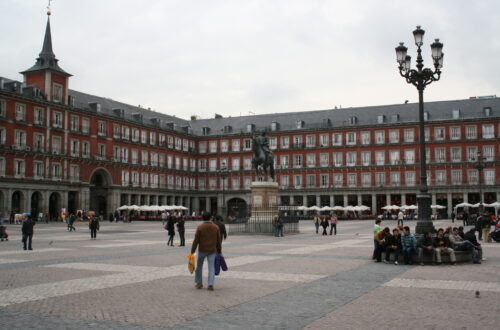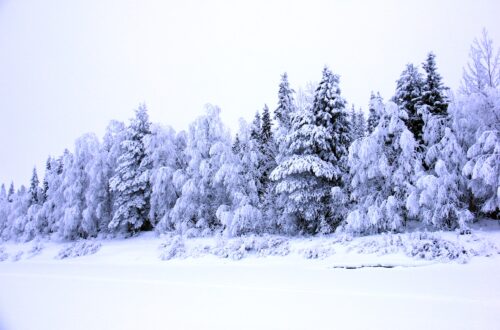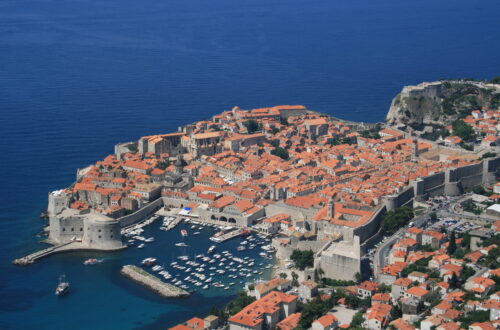
Warsaw & Krakow, Poland
Poland may not be the first country that comes to mind as a travel destination. But a week in the capital Warsaw and the second largest city in the county, Krakow, confirmed what I already thought: Poland is well worth a visit. Both Warsaw and Krakow are surprisingly beautiful cities!
The fact that Poland might not be high on your list may have to do with history. The country suffered greatly during the Second World War. After the war, Poland lay in ruins and twenty percent of the population had perished. To make matters worse, the country was assigned to the Russian sphere of influence during the Yalta conference and ended up on the other side of the ‘iron curtain’. More than forty years of communism mainly resulted in stagnation.
But since the fall of the wall in 1989 and the fall of communism, Poland has rapidly developed into a modern country. The country switched overnight from a centrally planned economy to a free market economy and since then the standard of living of the average Pole has doubled. There is, however, a big difference between the cities (modern, on average higher educated and cosmopolitan) and the countryside (poorer and more conservative). Those who visit Warsaw and Krakow therefore mainly get to know modern Poland.
Warsaw
The Polish capital Warsaw is only a 40-minute flight from Amsterdam Airport and from Frédéric Chopin Airport you can reach the city center in twenty minutes by train. There you arrive at Warzawa Centralna (the main station), which dates back to Soviet times. This is pretty clear from the outside, but the station has been completely modernized on the inside. When you walk out of the station, you come across a modern shopping center with tall glass office towers behind it.

This contrast between old Soviet architecture and modern, 21st century buildings and streets is everywhere in Warsaw. The Ulica Jerozolimskie, for example, is a busy main road with gray residential appartment blocks in ‘eastern bloc style’ and without any greenery, while the Nowy Swiat is just around the corner, a modern and attractive shopping street with beautiful stucco facades, restaurants and terraces. This is indirectly the result of World War II: during the war Warsaw was almost completely destroyed. After the war, the city was rebuilt, with many buildings in the center being completely rebuilt in the old style. Hence the many nineteenth-century facades in the Nowy Swiat. In other places new buildings appeared with the usual architecture of the Soviet era.
For example, the unmissable Palac Kultury i Nauki (Palace of Culture and Science), opposite Warzawa Centralna. The contrast with the modern shopping center could hardly be greater. The complex, which includes a congress center, a theater, museums and a cinema, was built in 1955 and was a gift from Soviet leader Stalin. That is precisely the reason why the residents of Warsaw are not exactly fond of the imposing building. The architecture is quintessentially communist, including meter-high statues of heroic workers, one of which holds the work of Marx, Engels and Lenin in his hands. At 231 meters, the tower of the complex is still the tallest building in Poland.

Via the Nowy Swiat and the Ulica Krakowskie Przedmieście I pass a square where there is a statue of Mikolaj Kopernik, better known to us as Copernicus, the Pole who showed that the earth revolves around the sun (and not the other way around). Then I walk to the Ogród Saksi (Saxon Gardens). This park was created in the eighteenth century following the example of the gardens of Versailles. Just like in Versailles, this park also belonged to a palace, but it was destroyed in the Second World War and never rebuilt.
On Ulica Krakowskie Przedmieście is also the Palac Radziwittów, nowadays also called the Palac Prezydencki (Presidential Palace). This is the official residence of the Polish president. In 1955 the treaty that created the Warsaw Pact, NATO’s military counterpart during the Cold War, was signed here. It is all the more striking that nowadays three flags wave in front of the palace: the flag of Poland, that of the European Union and the flag of NATO…
My second day in Warsaw I spend in Stare Miasto (the old town). This part of Warsaw was also completely rebuilt after the Second World War and I must say: they did a great job. The medieval center has been completely restored in the old style, including pastel-coloured plastered facades, attractive squares and car-free cobbled streets. The old town was once completely walled and part of the red brick wall is still there. On the south side of the old town is the triangular square Plac Zamkowy, with the salmon-colored Zamek Królewski (Royal Palace) on the east side. The original was built in the fourteenth century, this version dates from after the Second World War and then served for some time as the residence of the Polish president.

In the middle of Plac Zamkowy is a 22 meter high column with a statue of Sigismund III, the Polish king who moved the capital of Poland from Krakow to Warsaw in the sixteenth century. The statue is teeming with tourists. Plac Zamkowy is one of the city’s most popular tourist attractions, but the main square of the old town is a short distance away. Rynek Starego Miasta is surrounded by high classical facades, many of which are decorated, and today also by numerous terraces. In the center of the square is a fountain and old water pumps that are still working can be found at both ends of the square. It is an attractive square that is reminiscent of the squares in, for example, Rome and Madrid.
On the north side, Stare Miasto is bordered by part of the old city wall and by the Barbakan, a semicircular, red-brown brick defensive tower annex city gate. Beyond the old town boundary is Nowe Miasto (New Town), which is a bit of a misleading name as this part of town also dates back to the Middle Ages and Nowe Miasto has the same style and look as Stare Miasto. On the outskirts of Nowe Miasto is the Pomnik Powstania Warszawskiego (Warsaw Uprising Monument). Unveiled in 1989 (a few weeks before the Berlin Wall came down), this monument was built in honor of the inhabitants of Warsaw who revolted against the German occupiers in 1944 – unsuccessfully.

On Sunday morning, my third day in Warsaw, I walk from Stare Miasto, where I’m staying, all the way to the south side of the center. This part of the city, roughly south of the Ulica Jerozolimskie, is one of those parts that was rebuilt in the Soviet style after World War II. Large, gray apartment buildings, some with large images of heroic workers, line wide streets lined with blue trams that are also forty or fifty years old. The old Trabants and Skodas are gone, but it’s not hard to imagine how gray it must have looked when Poland was still on the other side of the Iron Curtain.
Then I walk to Lazienki Park, a large green park that once belonged to the hunting grounds of the Polish king. The park contains several former palaces and country houses of various Polish kings, including the Palac na Wyspie (palace on the water), which was built in the middle of an elongated lake (or rather a large pond). Lazienki Park is a green oasis where you can get away from the hustle and bustle of the city. Although you do get the crowds in the park itself on a sunny Sunday afternoon.
Krakow
On Monday morning I take the train from surprisingly beautiful Warsaw to Krakow, located three hundred kilometers to the south. The intercity is luxurious, comfortable and with free coffee. It is delayed, though. We leave ten minutes late and arrive half an hour late. I’d say that means you’re just driving too slowly…

From Krakow Glowny, the central station of Krakow, you walk straight into a modern shopping center. Once you’ve found the exit from the shopping center, it’s just a short walk to Stare Miasto (the old town). Until 1596, Krakow was the capital of Poland and since 1978 the entire old town is on the UNESCO World Heritage List. Stare Miasto is very compact, car-free and despite the many tourists there is a pleasant, relaxed atmosphere. It also helps that the weather is beautiful (sunny and about 25 degrees).
Stare Miasto dates from the fourteenth and fifteenth centuries and was once completely surrounded by a city wall with eight gates and a wide moat. At the beginning of the nineteenth century, when these defenses were no longer necessary, the city wall was demolished (except for a section on the north side) and the moat filled in. And what is so brilliant: a city park, the Planty, has been laid out on that spot. A green belt that surrounds the entire old town. Wherever you are in the old part of Krakow, if you walk down the street, you walk into the park. Perfect!

Rynek Glówny, the main square of Krakow, is the eye-catcher of the city. The square, built in 1257, measures two hundred by two hundred meters, making it the largest medieval square in Europe. It is a truly beautiful square, impressively large and surrounded by stately facades and many terraces. In the middle of the square is the Sukiennice, a large medieval market hall so large that it actually splits the square into two squares. On the east side of the Sukiennice is the Wieza Ratuszowa (Town Hall Tower). This seventy meter high tower was once part of the town hall that stood here, but was demolished in 1820.
On the other part of the square is the Bazylika Mariacka, a church that stands out for having two differently designed towers that are also not equally high. Every hour a trumpet blast sounds from the highest of the two towers. This was already done in the thirteenth century, but during an attack on the city the trumpet player of the moment was killed by an arrow. For that reason, the hourly melody still stops halfway through. A special example of historical awareness…

In one of the side streets of Rynek Glówny is the 15th century Collegium Maius, the oldest university building in Poland. Copernicus studied here, among others. On the north side of Stare Miasto, part of the old city wall still stands, with the Brama Florianska, the fourteenth-century city gate that was once the main gateway to the city. Just outside the gate is the Barbakan, the namesake of the one in Warsaw, a seven-turreted round fortification built in the sixteenth century. Also typical for Krakow are the carts that you see on almost every street corner where ‘obwarzanek’ is sold: a kind of mix between a bagel and a pretzel.
On my third day in Krakow I visit the Zamek Królewski na Wawelu (Wawel Castle). On a hill just south of Stare Miasto was the residence of the Polish kings, until Warsaw became the new capital in the sixteenth century. A walled fortress has been built on the hill, containing a cathedral and a Renaissance palace after the Italian model, built in the sixteenth century. The palace is now visited daily by busloads of tourists. Wawel is for the Poles an important symbol of their national identity and the long Polish history. Nationalism is no stranger to Poles, which is reinforced by the fact that Poland is a very homogeneous country: 97% are of Polish descent and 90% of them are Catholic.

After leaving the Wawel Castle, which is a bit too touristy for me, I walk around the hill, along the Vistula River down the Kazimierz district and back to Stare Miasto. The old town of Krakow is really beautiful, one of the most beautiful old towns I’ve seen so far, with the surrounding city park as a nice bonus. In short: are you looking for a city trip destination? Or two? I can highly recommend Warsaw and Krakow!




